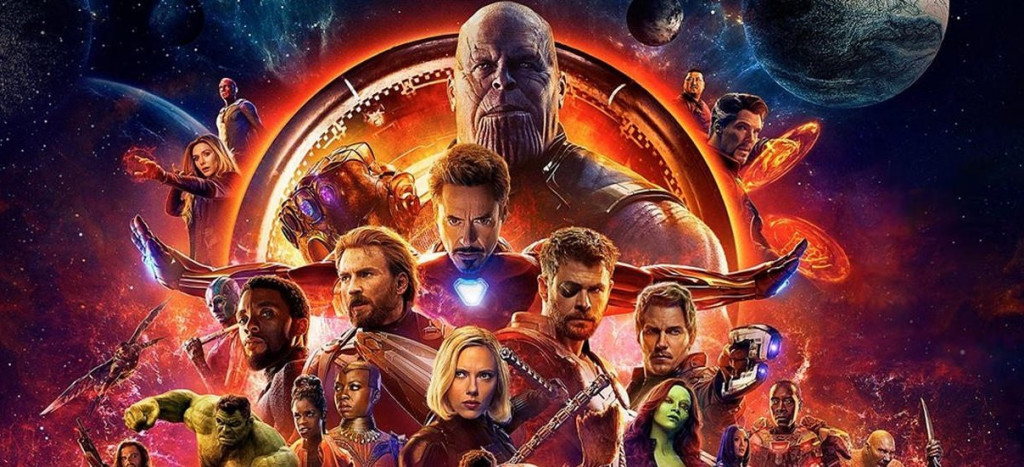“There was an idea… To bring together a group of remarkable people… To see if we could become something more… So when they needed us, we could fight the battles… that they never could.”
‘Avengers: Infinity War’ means something different to every person who has had the privilege of witnessing this momentous event that has been 10 years in the making. It is the culmination of a pop cultural phenomenon, unprecedented in every conceivable way. Yet, in all its enormous impact and its gargantuan box office collections, every single aspect of the Marvel Cinematic Universe (MCU) means something distinct to every single viewer, and it remains true for ‘Infinity War’ as well.
The idea to bring together a group of remarkable people to see if they could become something more might have been the iconic lines of Col. Nick Fury (Samuel L. Jackson) on-screen, but it was brought to life by Marvel’s unique strategy led by Kevin Feige.

From the establishment of an independent film studio to crossing over multiple characters in several films, it all came to a head in ‘Infinity War’. Because this film ties into 10 years worth of stories and because of its sequel necessitating its unusual ending, decoding it can seem rather disorienting. Perhaps the only other ending that can hold a candle to ‘Infinity War’s gut-wrenching conclusion, in all of mainstream pop culture, is that of ‘Star Wars: The Empire Strikes Back’.
There is a shock in ‘Infinity War’ hitherto unknown in all of the MCU, and with it comes a surprising maturity in handling not just the ramifications of its end, but also in conveying the belief and pain of its antagonist, Thanos (Josh Brolin). This makes a mainstream blockbuster with a huge cast and extended plot still feel so deliberate and agonising long after its very last scene.
In order to make sense of the ending, it must be remembered that its interpretation lies in the hands of the creative forces behind the camera, namely, Anthony and Joe Russo, the directors; Christopher Markus and Stephen McFeely, the writers; and to a great extent, Feige as well. However, several clues abound in the film itself, and our prior understanding of the MCU, along with a bit of relevant comic book history, will certainly help in determining where next year’s yet-untitled ‘Avengers 4’ might take us. Two more things are crucial in understanding the road that leads to ‘Avengers 4’ and possibly beyond:
1. The MCU was established not by typical corporate honchos, but by corporate honchos who had read, loved, and knew how to utilise their comic book sources.
2. The title change from the initial ‘Avengers: Infinity War Part I’ and ‘Part II’ signaled that the two movies are not so inextricably linked as was once thought. Now, they are two somewhat different movies. The first one focuses more on Thanos and establishing him as a multilayered and formidable antagonist. The second one should, in all probability, build up from the camaraderie created among the Avengers from the first movie, with the remnants of the team taking the fight to the Mad Titan.
MAJOR SPOILERS AHEAD!
The Comic-book Inspiration(s) and Their Implications
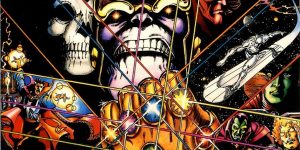
Arguably the best thing about the MCU’s post credit scenes is we get to see the astonishing numbers of people who have come together and dedicated themselves in various places across the world to make the movie possible. Sharp-eyed audiences would have seen a line in the credits roll where Marvel Studios specifically thanked a certain Jim Starlin for his contributions.
Starlin is one of the most influential comic book writer-artists of all time, with his best work concerning Marvel’s space stories. More pertinently, he created Gamora, and co-created Drax the Destroyer and yes, Thanos himself. It is his 1991 story arc titled ‘The Infinity Gauntlet’ from which ‘Infinity War’ borrows its premise.
The movie has Bruce Banner aka The Hulk (Mark Ruffalo) crashing into Doctor Strange’s (Benedict Cumberbatch) Sanctum Sanctorum to announce the Mad Titan’s impending arrival on Earth, much like in the comic where Silver Surfer does effectively the same thing. In the comic series, Thanos also decides to wipe out half of all life with a snap of his fingers after which Adam Warlock (hinted at, in the mid-credits scene of ‘Guardians of the Galaxy Vol. 2’) and Nebula take control of the Gauntlet to undo what Thanos did.

But the story from which ‘Infinity War’ seems to take the most inspiration from is ‘Infinity’ written by Jonathan Hickman. Published in 2013, ‘Infinity’ followed the events of the ‘Age of Ultron’ storyline in the comics. The direct predecessor of ‘Infinity War’ is of course 2015’s ‘Avengers: Age of Ultron’, making this a unique coincidence. In this comic series, Thanos invades Earth along with his Black Order, who are introduced for the very first time in comic book history. ‘Infinity’ also includes a full-blown battle in Wakanda between Black Panther’s army and the Black Order’s Outriders, much like the Battle of Wakanda in the movie’s final act.
To Be Strange or Not to Be, That Is The Question
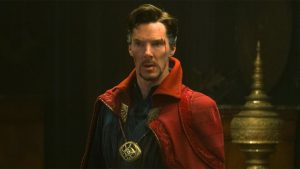
A jarring moment in the film arises when Thanos has thoroughly bested the Avengers on his home turf, Titan, and is about to finish Tony Stark (Robert Downey Jr.) off, once and for all. However, Doctor Strange makes a sudden and unlikely proposition to Thanos. He offers to give him the Time Stone if only he spares Stark’s life in return, to which Thanos agrees. It is quite easy to let our senses be clouded by relief to find that Stark won’t be killed, however this scene merits special examination.
After Stark and Spider-Man (Tom Holland) save Strange from Ebony Maw (Tom Vaughan-Lawlor), Strange reiterates that although they have rescued him, he will always choose saving the Time Stone over saving either Stark or “the kid”, because the fate of the universe would depend on the Stone being kept away from Thanos. However, in a situation that demands exactly this course of action from Earth’s Sorcerer Supreme, he seemingly shies away from it. He refuses to let Stark die, although it isn’t strictly because of any humanitarian reasons.
Earlier in the film, as the Guardians are gathered on Titan with Stark and Spidey, Strange is in a deep meditative state, his body making unbelievably rapid motions simultaneously. As the rest of the group gathers around him, being concerned, he collapses and tells them he used the Time Stone to view a little over 14 million outcomes of their fight with Thanos, out of which only one will lead to their victory.
As the heroes fade away one after the other, leaving audiences stunned, Strange’s last words to Stark are the key to his decision. He tells him this was the only way. In other words, the only way to bring about the one triumphant outcome he foresaw. This confirms that Strange didn’t save Stark just for his own sake. Instead, a couple of possibilities arise.
Strange may have foreseen that the Infinity Gauntlet could not sustain the ridiculous power of all the six Infinity Stones simultaneously. Indeed, as the movie draws to a close, we see the Gauntlet is damaged after Thanos snaps his fingers with the Stones themselves in an unenviable condition. Perhaps in order to facilitate this situation, Strange intentionally gives him the Time Stone.
However, the Gauntlet will almost certainly return in the sequel, but perhaps not in the way we expect. The mould used by Eitri (Peter Dinklage), the master forger on Nidavellir, to craft the Gauntlet, still exists. On the off chance that the original Gauntlet is rendered non-functional, a Gauntlet can still come into being.
Moreover, what is now tentatively titled ‘Avengers 4’ might well be titled ‘Avengers: Infinity Gauntlet’ if a slip by Zoe Saldana in a BBC News interview last April is to be believed. But this should be taken with a pinch of salt. Nevertheless, the Infinity Gauntlet should assume a crucial role in next year’s sequel as well.
However, there could be a whole other reason as to why Strange decides to give Thanos the Time Stone: ensuring Tony Stark’s survival.
A ‘Stark’ Conclusion

“You’re not the only one cursed with knowledge,” says Thanos to Stark when the latter asks how Thanos knows his name. Tony Stark has been suffering from considerable trauma following the Battle of New York, which took place in ‘The Avengers’. This was also documented in both ‘Iron Man 3’ and ‘Avengers: Age of Ultron’, when he saw visions of his dead teammates.
In some way, Tony Stark could be the key to defeating the Mad Titan. It could be his technological genius, or perhaps sheer bravery. Some time before disintegrating, Strange tells him that this is the endgame after Tony reprimands him for giving away the Time Stone. Perhaps it is Tony who has to play that endgame to win it for the heroes.
After all, the MCU did start with Iron Man, so an end of the story culminating in these 10 years with Iron Man does seem oddly fitting, although perhaps a little too neat for anyone’s liking.
The Significance of Thanos’ Victory
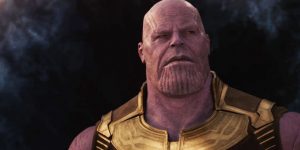
Thanos’ triumph, and more tellingly, the disintegration of around half of the Avengers is certainly a departure for Marvel Studios, whose movies have been typically (and naively) associated with a lighter tone. This considerably raises the stakes for the sequel, and establishes Thanos as the most daunting Marvel antagonist in very quick time.
However, he is not a regular adversary. His motivations that have been fleshed out over the course of ‘Infinity War’ enable us to certainly not empathise with him, but understand him at the very least. When he snaps his fingers to set the appalling final act into motion, he is transported to a strange, isolated amber world. Owing to the presence of the child Gamora (the Gamora he first came to know and love) and the orange hue, we can surmise that he was within the Soul Stone. His anguish at sacrificing Gamora can be clearly seen, although that transforms to a satisfied look as he basks in a lush green planet which seemed to evoke his vision of old, prosperous Titan he showed to Doctor Strange.
The destroyed Gauntlet can be seen as well, as aforementioned. It is certain that the Avengers would have to look for other ways to get to the Mad Titan.
The Post-Credits Scene
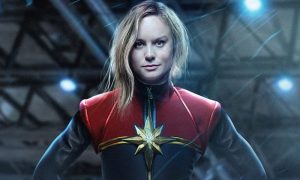
Given how important Marvel’s post-credits scenes have been over all this time, ‘Infinity War’ needed something special, not just because of its own significance, but to appease fans after its uncharacteristically dire ending.
As Maria Hill (Cobie Smulders) and Nick Fury are stopped by a driverless car, they start registering the chaos around them caused by Thanos’ actions. Upon seeing Hill disintegrate right before his eyes, Fury can only barely activate a strange, clunky device before he too, fades away. The device keeps beeping till a starburst icon appears, confirming the message is sent.
The icon, of course, is a rudimentary rendition of Captain Marvel’s (Brie Larson) emblem. It makes sense for Fury to call upon her, given that she is the most powerful Marvel superhero by far, according to Feige’s own admission, and also because of her long association with Fury, owing to her military past.
She has her standalone movie coming up in March 2019 that is set in the 1990s. That should answer quite a few questions, including why she hasn’t been called to help before this point. It should also shed more light to her powers, and her association with the alien Kree and Skrull races as well, both of which play a crucial role in the MCU.
This Is Not the End
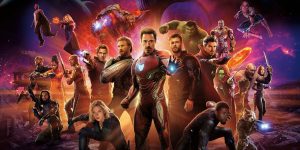
Audiences could be less worried about the fate of their favourite characters, since the real world ramifications are too great to ignore. There have been sequels planned in the near future for each of Spider-Man, Black Panther, and Guardians of the Galaxy. Although to their credit, Marvel Studios haven’t released too many details about these future films. Regardless of real world developments, the immediate emotional pull of the last scenes will always remain significant.
Some thought should be given to the two main Avengers who didn’t make an appearance in the film. Ant-Man’s (Paul Rudd) fate should be revealed in the upcoming ‘Ant-Man and the Wasp’; it is likely that he’ll be under house arrest, although that could change, of course. Hawkeye (Jeremy Renner) is supposedly undertaking a covert mission during the events of ‘Infinity War’ according to the Russos themselves. His return should be expected with some degree of certainty. Vision could potentially be alive, considering we don’t know to what extent Shuri (Letitia Wright) was successful in detaching his self from the Mind Stone.
The survival of all the Phase One Avengers in the face of seemingly random deaths seems too great a coincidence to not be intentional. It could be a matter of ending how it all started; the original heroes against their most ominous opponent yet.
Next year’s sequel promises renewed heartbreak and hope in the face of painstakingly long odds. However the story of our most cinematically accomplished heroes ends, it will be a magnificent and nuanced spectacle to cherish, if only for what these characters and their stories have meant to each and every one of us in our own way, for the last 10 years.
Read More: Upcoming Marvel Movies

